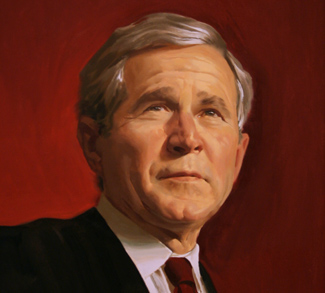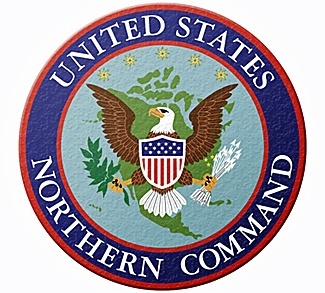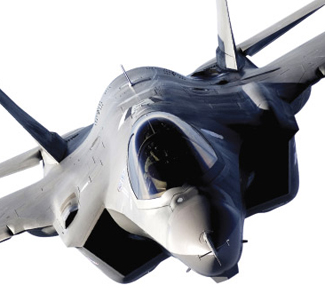Former Soviet republics have a penchant for conspiracy theories, preferring to blame national minorities, antagonistic neighbors, and foreigners for protests, revolutions, economic crises, and military defeats. Conspiracies against the nation are all the rage in Armenia which is desperately searching for the ‘guilty’ party behind its military defeats and loss of territories.
Armen Grigoryan, Secretary of Armenian Security Council recently blamed Russia for taking control of and transferring Karabakh to Azerbaijan. This conspiracy fails to consider more pertinent factors behind Armenia’s military defeats that are blatantly evident in Russia’s war against Ukraine. Russia, which three years ago claimed it had the ‘second best army in the world,’ was unable to defeat Ukraine because its military training is still Soviet, and its military equipment is of very poor quality.
The Armenian army relied on Russian (i.e., Soviet) training and Russia (i.e., Soviet) military equipment. Becoming an independent state in 1991, Armenia chose to tie itself militarily to Russia. In contrast, Azerbaijan’s army was trained by NATO members and its military equipment was primarily Western, especially Israeli, and Turkish.
Training and military equipment are not factors that are new to warfare. In the 1982 Falklands War, Britain defeated Argentina for the same reasons, its troops were better trained compared to Argentinian conscripts and its military equipment was more modern and better quality.
The new Armenian paradigm of a Russian conspiracy theory to support Azerbaijan has no basis. Armenia is a member of Russian-led CSTO (Collective Security Treaty Organization) and EAEU (Eurasian Economic Union), Azerbaijan is not. Armenia hosts Russian military bases, Azerbaijan does not.
Armenia was military defeated because its army was poorly trained and its Russian (i.e., Soviet) military equipment could not compete with Western stock. Both Armenia in the Second Karabakh War in 2020 and Russia’s war against Ukraine since 2022 showed they had not invested in drone warfare. Azerbaijan had, purchasing Israeli and Turkish drones. The Second Karabakh War is believed to have been the world’s first drone war. After Russia’s invasion of Ukraine, the Kremlin, having never invested in them, searched the world for drones and after being turned down by Turkey began to receive them from Iran.
The bulk of Russia’s army is in Ukraine, where it has an estimated 470,000 troops. Thus, Russia’s power projection has weakened throughout Eurasia, including in the South Caucasus. Russia was no longer able to impose its influence over Armenia and Azerbaijan and maintain their relationship as a frozen conflict, as it had in Moldova and Georgia.
From the early 1990s, Armenia positioned itself as the only military ally of Russia in the South Caucasus. Formalizing this alliance within the CSTO and EAEU, Armenia played a critical role in the strengthening of Russia’s influence in the region. In contrast, Georgia followed Ukraine in pursuing integration into the West while Azerbaijan adopted a neutral stance and multi-vector foreign policy.
Soviet (until 1991) and Russian (from 1992) military assistance proved to be crucial for Armenia in enabling it to win the First Karabakh War. Military victory enabled Armenia to occupy a fifth of Azerbaijani territory from 1994 until 2020-2023.
According to the Stockholm International Peace Research Institute (SIPRI), Russia was the largest supplier (94%) of military equipment to Armenia from 2011-2020. Russian deliveries to Armenia included armored personnel carriers, air defense systems, multiple rocket launchers and tanks—all of which were deployed against Azerbaijan in the Second Karabakh War.
In 2015, Armenia and Russia signed a military treaty in which the Kremlin provided a $200 million loan to purchase Russian military equipment. Discussions are ongoing to continue these loans and increase them. In August 2021, during a defense exhibition in Moscow, Armenia’s then Defense Minister Arshak Karapetian met with the director of the Russian Federal Service for Military-Technical Cooperation Dmitry Shugayev and the director of the RosoboronExport Company Alexander Mikheyev to ‘discuss the whole range of issues of Armenian-Russian military-technical cooperation.’
Iskander surface-to-surface missiles, with a range of 300 kilometers and which Russia supplied in 2016, were used to strike a target deep inside Azerbaijan’s territory. Reportedly, Armenia fired Smerch rockets, supplied by Russia in 2016–2017, at the Azerbaijani cities of Barda and Ganja, killing more than 40 civilians. Russia delivered four Su-30SM combat aircraft to Armenia in 2019.
Armenia’s support for Russia’s miliary intervention in Syria grew after the 2018 Armenian revolution. Prime Minister Nikol Pashinyan, following his meeting with Russian President Vladimir Putin in Moscow on September 8, 2018, announced that Armenia and Russia would ‘implement a joint humanitarian program’ in Syria. Pashinyan claimed the mission would not have a military component; in reality, Armenia’s contingent consisted of mainly military personnel. In 2019, Armenia sent 83 medics, demining experts, and other military personnel to Syria.
Talks on Armenia’s military cooperation with Russia continued after Pashinyan came to power in a pro-Western revolution in 2018 and after Armenia was military defeated in the Second Karabakh War. In addition to increasing military cooperation, Armenia agreed to allow the expansion of Russia’s physical military presence. In May 2021, Prime Minister Pashinyan sanctioned the creation of two outposts of Russia’s 102nd Russian military base, which had been operating as a Soviet and then Russian base in Gyumri for seven decades, in the Syunik region of Armenia.
Conspiracy theories of Russia stabbing Armenia in the back are nothing other than fake news. In the months leading up to the outbreak of the Second Karabakh War on September 27, 2020, an increase in the number of flights by IL-76 military-transport planes was registered, with more than 510 tons of Russian military equipment delivered to Armenia. Russian military shipments to Armenia continued throughout the Second Karabakh War, with a total of nine flights.
Azerbaijan’s President Ilham Aliyev raised concern with Putin over the growth of Russian military supplies to Armenia. Then Russian Defense Minister Sergei Shoigu provided disinformation to Aliyev that the shipments contained construction materials for Russia’s military base in Gyumri.
Armenia has recently begun to abstain in votes at the United Nations (UN) on the war in Ukraine. On July 11, Armenia abstained in a vote on the safety of nuclear power in Ukraine, particularly concerned over the Zaporizhzhya nuclear plant, which is the largest in Europe and has been occupied by Russian troops since 2022.
Armenia has not always voted in this way. From 2014-2023, Armenia always supported Russia at the UN General Assembly in votes on Russian military aggression against Ukraine and the occupation of Crimea. In December 2019, Armenia voted against a UN resolution stating that the ‘Russian military presence in Crimea violates national sovereignty, political independence and territorial integrity of Ukraine and undermines the security and stability of neighboring countries and the European region.’
Armenia supported the misnomer of the ‘self-determination’ of Crimea to buttress its claims for ‘self-determination’ of the Karabakh region. The UN Charter does not support ‘self-determination’ of regions of states, as seen in its backing of Nigeria against Biafran separatism in 1967-1970. In addition, Kosovo is a poor example for Karabakh as Ukraine and Azerbaijan have never recognized its independence.
Therefore, contrary to Armenian conspiracy theories that Russia abandoned Armenia in two wars against Azerbaijan in 2020-2023, the evidence suggests otherwise. Since 1991, all of Armenia’s leaders have chosen to pursue a close political and security relationship with Russia that has brought with it poor military training and poor-quality equipment.
Since 2023, when Karabakh returned to Azerbaijan’s control, Pashinyan and Armenian leaders have spread conspiracy theories of Russia’s betrayal, which have no basis in fact. The need for conspiracy theories is two-fold. The first is to deflect blame from Armenian nationalists and the public who are angry at the loss of what the mythical and even mystical mountainous region of Karabakh. The second, which Pashinyan has himself raised, is the need for Armenians to adjust their imagination of ‘Armenia’ to the reality of Soviet republican boundaries becoming international borders, and to no longer support the borders of ‘historical (i.e., greater) Armenia.’
For three decades, Armenia has pursued a misplaced over-reliance on Russia which, as its war against Ukraine demonstrates, is a declining great power. The United States and Europe should welcome Pashinyan’s rhetoric to become more independent of Russia and pursue a multi-vector foreign and security policy. Meanwhile, conspiracy theories should be consigned to the trash can.
Taras Kuzio is a professor of political science at the National University Kyiv-Mohyla Academy of Kyiv, Ukraine. His books Russian Disinformation and Western Scholarship and
Fascism and Genocide. Russia’s War Against Ukrainians are recently published by Columbia University Press.
The views expressed in this article belong to the author(s) alone and do not necessarily reflect those of Geopoliticalmonitor.com.




